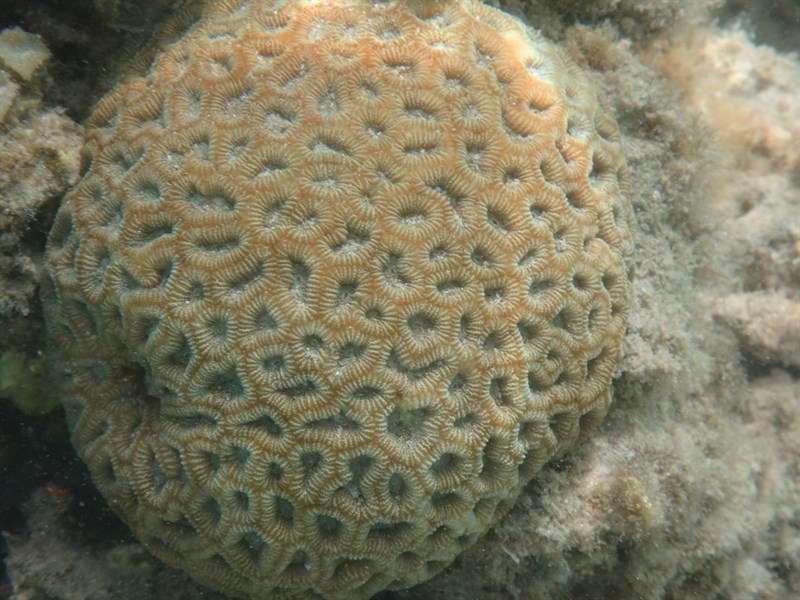Knob Coral, scientifically known as Dipsastraea lacuna, is a fascinating coral species renowned for its distinctive growth pattern and resilience. This coral, with its intricate structure and vibrant colors, plays a vital role in the health and biodiversity of coral reef ecosystems.
Description & Characteristics
Dipsastraea lacuna is easily identified by its knobby, dome-shaped colonies that can reach a maximum size of approximately 1 meter in diameter. The coral’s surface is characterized by numerous, irregularly shaped, and deeply indented pits or “lacunae,” giving it a distinctive textured appearance. These pits are home to individual polyps, the tiny, soft-bodied animals that make up the coral colony.
The color of Dipsastraea lacuna can vary significantly, ranging from shades of brown and gray to vibrant greens and yellows, often displaying a mosaic of hues across the colony. This colorful diversity is a result of symbiotic relationships with microscopic algae called zooxanthellae, which live within the coral’s tissues.
Habitat and Occurrence
Dipsastraea lacuna thrives in a variety of shallow-water habitats, typically inhabiting the reef crest and upper reef slope zones. It is commonly found in areas with moderate wave action and good water circulation, where it can access essential nutrients and sunlight.
The Knob Coral is a widespread species, occurring throughout the tropical Indo-Pacific region. Its distribution extends from the Red Sea and the east coast of Africa to the Pacific Ocean, including the Great Barrier Reef, the Philippines, and Indonesia. Its preference for shallow water habitats ensures its presence within the neritic zone, the coastal region of the ocean that extends from the shoreline to the edge of the continental shelf.
Taxonomy
The species Dipsastraea lacuna belongs to the Class: Hexacorallia, Order: Scleractinia, and Family: Merulinidae. This classification places it within the larger group of stony corals, which are characterized by their hard, calcium carbonate skeletons.
Feeding
Dipsastraea lacuna, like many other coral species, obtains nutrients through a combination of two methods:
First, it captures and consumes small plankton organisms, such as zooplankton and phytoplankton, using its tentacles. This process, known as suspension feeding, allows the coral to supplement its diet with essential nutrients.
Second, Dipsastraea lacuna harbors a symbiotic relationship with zooxanthellae, photosynthetic algae that reside within its tissues. The zooxanthellae use sunlight to produce energy through photosynthesis, sharing a portion of their food with the coral host. This mutualistic relationship provides the coral with a reliable source of energy, allowing it to thrive in nutrient-poor environments.

Image References